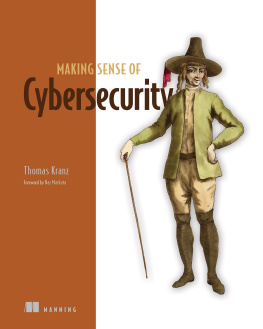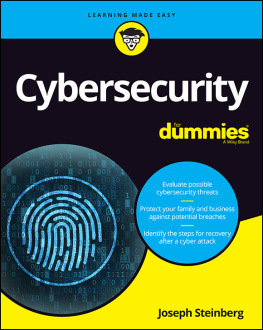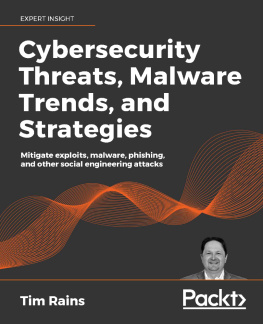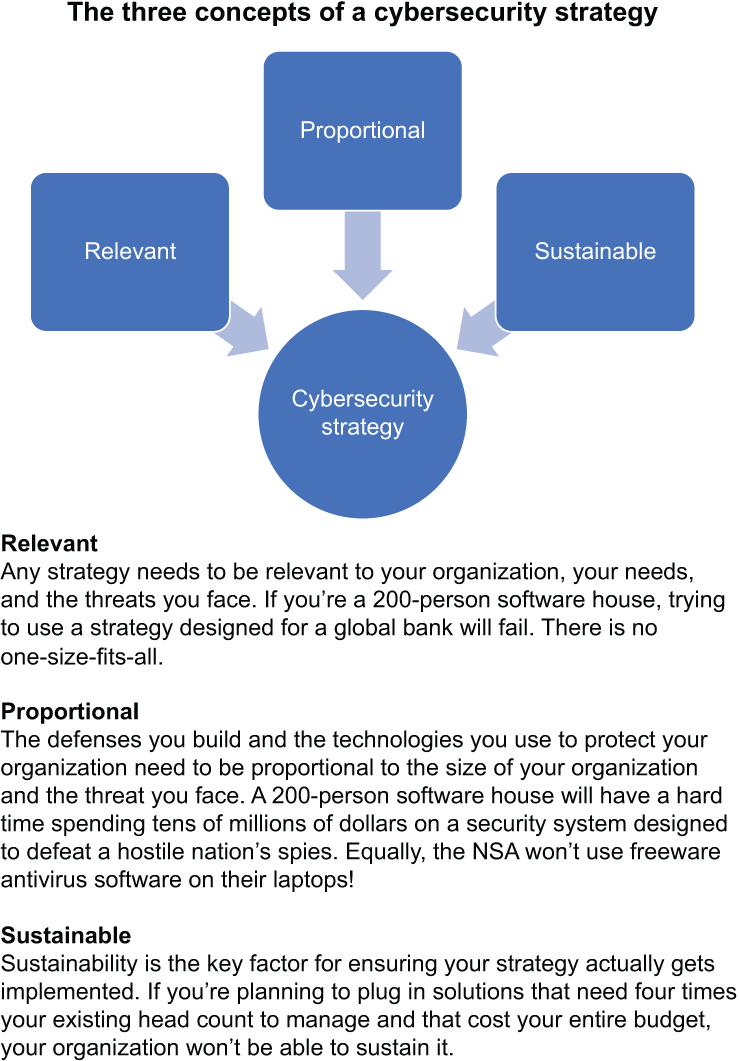For Emms, who made it all possible.
front matter
foreword
As a cybersecurity researcher, its my job to try to understand how a specific technology works, try to find ways to break it, and find ways to fix it or prevent attacks from happening. Even before starting my professional career, I was involved in various hacking activities or hobbies, some of which were not legal and came with consequences.
I first met the author, Tom Kranz, in London during my first face-to-face interview with a consulting company. He eventually became my line manager. Tom has a way of simplifying complex problems into bite-sized chunks, making them easier to digest and implement.
When it comes to technology and cybersecurity, most people dont really think about how things work; they only care that it works. This lack of diligent preparation makes it almost impossible to keep information secure and opens the door for security breaches. Making Sense of Cybersecurity guides readers through what it takes to identify real-world threats and create strategies to combat them.
Understanding how attackers think and act, knowing what to protect, and devising defenses against attacks are vital to protecting our data, assets, and businesses. This book provides a great introduction to the fascinating (and entertaining) world of cybersecurity.
Naz Markuta
Cybersecurity Researcher
preface
I started out in the 80s as a 10-year-old armed with a BBC Micro, a modem, and illicit access to British Telecoms Prestel system. The tools have changed since then, but not much else has.
Technology has always fascinated me since those early days in the home computing revolution. My summer job turned into full-time employment as a PC and network support engineer back in the heady days of Novell Netware and Lotus cc:Mail. Finding out how stuff worked was difficult: you had to pay a lot of money to get technical manuals, and even more money to license the software. Hunting on bulletin board systems (BBSs) and early FTP sites for text files and trading with other knowledge-starved acolytes became a way of life. Stumbling on Phrack and 2600 ezines was a revelation.
I spent most of the late 90s building, protecting, and breaking into SUN Microsystems and Silicon Graphics UNIX systems, getting involved in the fledgling internet and high-end, high-performance computing. I deployed early intrusion detection systems (IDSs) to protect the systems Id designed and built from people like me, and Marcus J. Ranum (firewall and security guru) scared the hell out of me by calling out of the blue from the US to see what I thought of his Network Flight Recorder product.
Ive always gone where the technology was cool, the people fun, and the problems tough. Consequently, Ive been involved in some amazing things: a stint at Lucent Labs in the UK was fascinating (getting an email from Dennis Ritchie was like getting a benediction from the Pope), working at various gambling start-ups was hilarious, and Ive been able to do cool things like design and build a fault-tolerant system that was used daily by a third of the UK population.
The emergence of PDAs, and then mobile phones, was a real game-changer. War dialing with a Palm III PDA and modem, tucked into the false ceiling of an office, soon led to usable, powerful, portable computing from Nokias Communicator phones.
The technology has improved in leaps and bounds, even if the innovative giants that got us here are no longer with us. I saved up 100 to buy a 32 MByes, thats megabytesmemory expansion I had to hand-solder for my BBC Micro. And my mobile phone now has a 512 GB memory card thats the size of my fingernail.
At the same time, the fundamentalsthe basics of what makes everything around us workhave been abstracted and hidden. While computers have become easier to use, theyve been deliberately made more difficult to understand. And thats a problem, because the security issues we had almost 40 years ago (weak passwords, badly written software, poorly protected systems) are still present today.
Ive enjoyed a long and endlessly entertaining career building interesting things, breaking them, and then trying to protect them from someone else breaking them. Thats been distilled down into the book youre now reading, and I hope you have as much fun learning about this as I did.
acknowledgments
Writing a book is a great deal of hard work, and not just for me. An amazing group of people have helped behind the scenes to produce this fabulous tome you now read.
Thanks to Emma, who has been patient and supportive while Ive been putting this book together.
Mick Sheppard, Steve Cargill, Jeff Dunham, Naz Markuta, and Orson Mosley have been bad and good influences in equal measures, as good friends should be. Thank you for putting up with my antics over the years; I wouldnt be where I am today without you all.









